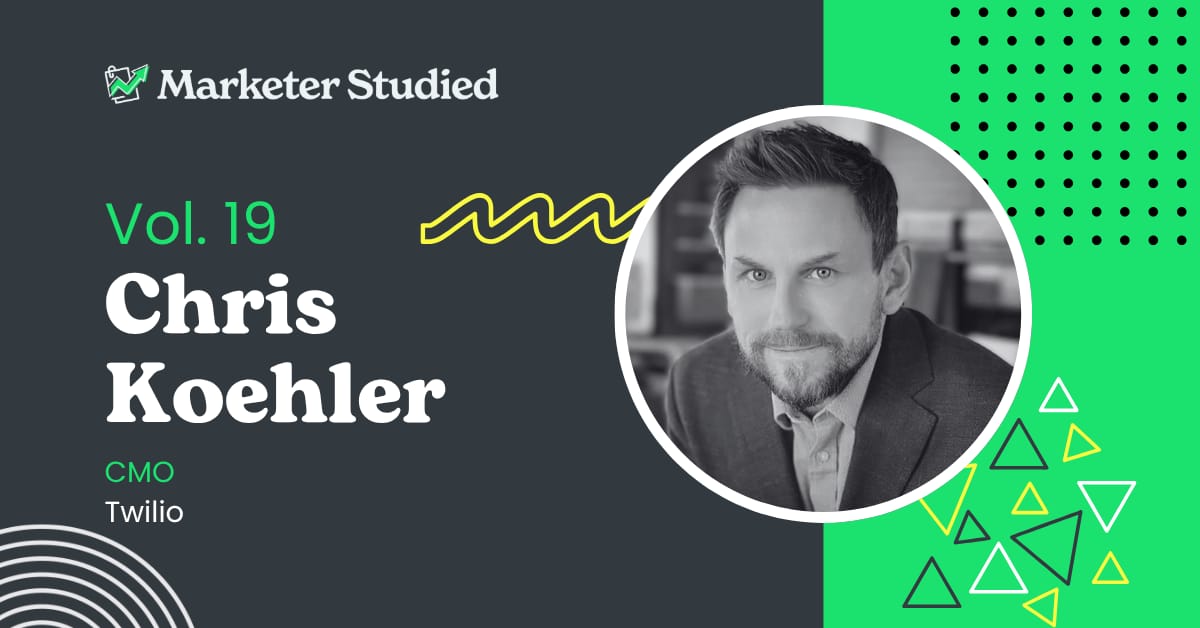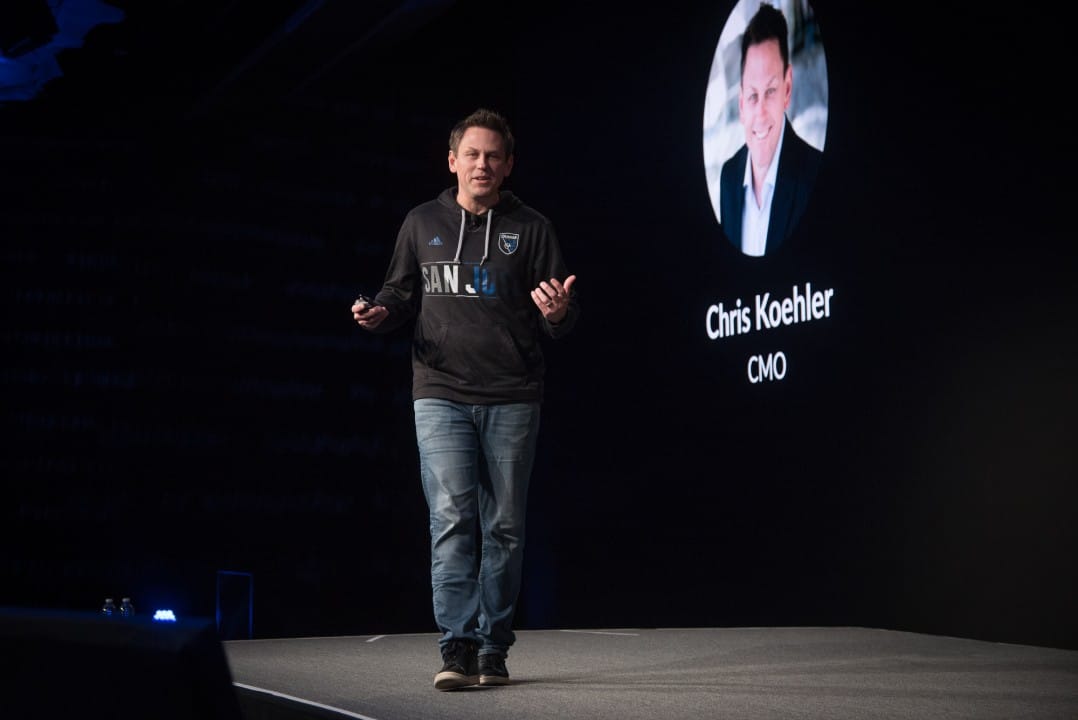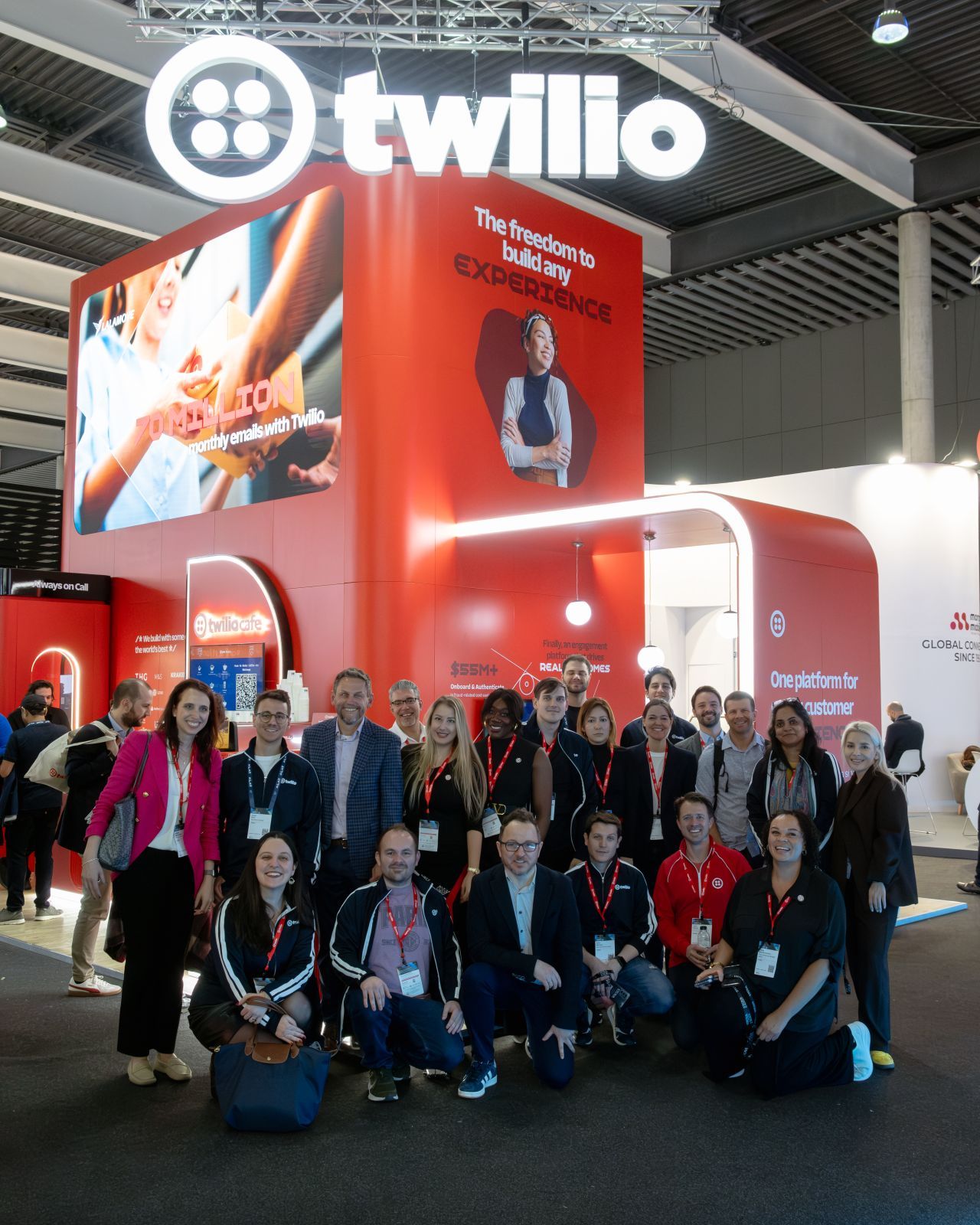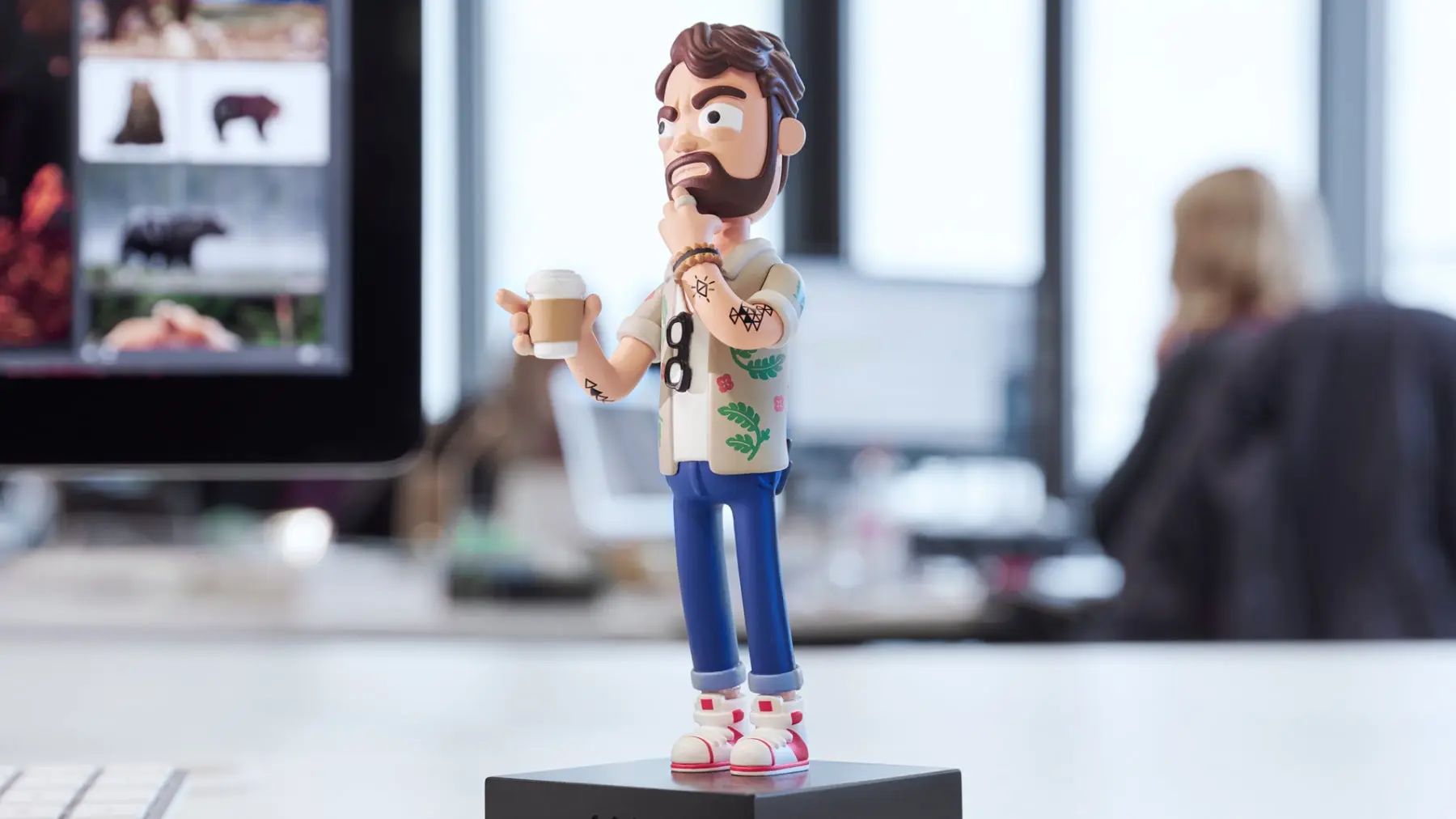- Vendry
- Posts
- Vol 19. Insights from Twilio’s CMO
Vol 19. Insights from Twilio’s CMO
Twilio’s CMO shares lessons on brand clarity, customer research, and taking bold creative swings

Meet Chris Koehler
Each week, we sit down with a marketing leader to learn more about their career, insights, and accomplishments. This week, that marketing leader is Chris Koehler, CMO of Twilio. With a career rooted in data analytics and product marketing, Chris carved out a path that blends analytical rigor with business storytelling.
Here are the need-to-knows about Chris:
He spent over a decade at Adobe leading the Customer Success, Account Management, and Solution Consulting organization.
He made a jump to lead Customer Success at Box before stepping into the CMO role there, where he led for five years.
At Twilio, he’s leading the global marketing strategy, with a focus on expanding brand awareness, messaging, and positioning.
The Offer: You’re already late hiring an agency for Q4!
With Q4 only months away, brands are scrambling to find the perfect agency to help them finish 2025 on a strong note.
Fortunately, as a Case Studied subscriber, you can get matched with the top performing marketing, design and dev agencies for free through Vendry.
Vendry will help you…
✅ Gather proposals and case studies from top partners
✅ Vet agencies based on performance and industry experience
✅ Negotiate pricing and finalize contracts
Join Estee Lauder, Dr. Squatch, F1, Shopify and 1000’s of brands that have been matched on Vendry for free + receive an $100 Amazon Gift card as we believe you should be compensated for your time.
From ZIP codes to zeroes and ones
Chris’s entry into marketing started with a simple question: How do you grow a business and sell things? Fascinated by human behavior and psychology, he took a marketing class in college and immediately knew he’d found his lane.
His first role out of college was working with the early, pre-digital days of marketing geosegmentation.
"We were using census data, so the fidelity was really poor,” Chris laughs. “We’d say, ‘Everyone in this ZIP code has these attributes.’ Now, you think about how far we’ve come and how ludicrous that was. But being a data-driven marketer, that experience certainly helped shape me in my thought process as I learned the craft over time."
Chris continued his learning in roles on both the vendor and client side. Eventually landing at SunTrust Bank (now Truist), Chris focused on marketing analytics in the days of direct mail, a highly data-driven role. “It sort of fueled the belief that we can all be super data-driven marketers.”
It taught me that great marketing is just matching the right message to the right person at the right time.”
The art and science of Adobe
A pivotal chapter came when Chris joined a web analytics company that was later acquired by Omniture, and then Adobe. And Chris stayed there for 10 years.
"I think we really transformed an industry and I don’t mean that lightly. I remember very clearly when the acquisition was announced. I thought, ‘This is weird. Why Adobe? They're the team that does Flash and Photoshop. This makes zero sense.’ But then I got to see this brilliant vision come together where the art and science of marketing converge," he says. “And I was lucky enough to be given multiple opportunities over my tenure to continue to grow."

Chris spent almost 8 of his 10 years at Adobe in customer-facing roles, logging thousands of hours talking to marketers. At one point, he ran the sales engineering team, tested messaging, and developed a sharp intuition for what resonated.
"You realize quickly: No one cares about the tech itself—they care about solving business problems. The tech is just ‘the how.’"
From data to Twilio

After Adobe, Chris made the leap to Box, where he led customer success before stepping into the CMO role. Then, when Twilio came knocking, Chris said he evaluated the opportunity based on three criteria:
“Is it the right culture? Am I going to work with people that I really enjoy? And is there an opportunity to apply this unique skillset I’ve gathered and uniquely put my mark on this company? Twilio checked all those boxes so it was a pretty easy decision for me at that point.”
Today, Chris leads the marketing function at Twilio with a focus on clarity, connection, and customer insight. That includes regular conversations with buyers and prospects to pressure-test ideas and sharpen the company’s positioning in an increasingly AI-driven world. He’s especially focused on how AI can enhance personalization, without losing the human connection that builds trust. And for those paying attention, yes, Chris does work with Adam Morgan, who was featured in Marketer Studied just a few weeks ago, who shared a bit about the brand’s recent revamp. Chris provided his own perspective.

“I joined Twilio with the perspective of both a customer and a marketer, and pretty quickly, I felt like we’d drifted a bit from our roots. We were this fun, geeky, developer-first brand—but over time, like many companies, we’d gotten more conservative. We started trying to appeal to everyone, and in doing so, our message got diluted. It wasn’t clear who we were really speaking to anymore.”
“Adam and the team had this brilliant insight: what if we shift from ‘developers’ to ‘builders’? Because building isn’t just about writing code—it’s about creating experiences, launching companies, driving change. That framing let us evolve the brand without reinventing it. We kept the soul of Twilio, but added a layer that resonated with a broader set of customers while still honoring our heritage.”
A standout campaign
“One of the more fun, edgy campaigns I’ve seen come to life was something called the ‘Hovering Art Director,’” Chris said. “It came out of our team in the Nordics while I was leading go-to-market for Adobe Creative Cloud enterprise. The premise was that every creative knows that feeling of someone standing over your shoulder telling you what to do until it becomes this sort of bastardization of the creative.”
At that point in time, Adobe had bought a company called Fittolio, and as part of that, they were trying to compete with Getty and Shutterstock. “The whole point was to have any visual image at your fingertips, built in within the tools like Photoshop that people love.”
With his position at that point in time, Chris wasn’t in the room when the Hoovering Art Director campaign was being built but he immediately recognized the potential of it and applied the learnings across the team’s global effort to help supercharge that business. “The biggest takeaway? Bring something bold, with a bit of swagger. It was proof that a campaign can resonate globally when it taps into a universal truth, and isn’t afraid to poke a little fun..”

“Even art directors could laugh at it because they recognized themselves in it. And creatives loved it because we were speaking their language, acknowledging the real tension they face, but doing it with humor and a bit of swagger.”
Advice and takeaways
1) Get in front of customers.
Chris built his product marketing chops not in classrooms, but in real-world conversations with customers. "I’ve spent thousands of hours talking to marketers," he says. "And from that, I got a sense of positioning, pain points, and what works. And it taught me how to just be incredibly customer-centric."
Even if it’s not part of your usual day to day, be proactive about getting in front of customers. Ask to sit in on sales calls, even if you’re off camera and muted. Be a fly on the wall so you can observe when the customer is most engaged, and—perhaps equally as important—least engaged.
2) Don’t be afraid of the jungle gym.
After 10 years at Adobe, Chris had a moment of self reflection about what was next. He decided to take all his learnings and apply it to a smaller company as it scaled at Box. “Careers aren’t ladders, they’re jungle gyms. You climb, swing, and sometimes drop down to get back up. That’s all part of it. “
As you consider your next career moves, be open to opportunities even if they don’t seem like natural next steps. If it allows you to align with your priorities and goals—like working with really great people or applying your skills in a new way—then keep the jungle gym in mind and explore the opportunity.
3) Avoid making assumptions.
Of all the customer research efforts that marketers could prioritize, Chris thinks the most important one is finding the business problems the customer thinks your company should be solving for them. “I think too often, we go in with an assumption about the problem we’re trying to solve but the reality is, if you don’t ask your customers, you may be off.”
As simple as it sounds, make sure you talk to your customers about their problems. Even if you’re hearing a lot about one set of problems, your customer could share a totally different one when you get them talking about it. From there, you can evaluate whether they see you as a solution to that problem.
In Chris’s world, the best marketing doesn’t come from assumptions, it comes from conversations. And the boldest ideas start with listening.
Find Your Fit: Vendry connects marketing teams with top-tier creative agencies for brand, experiential, and content work. Brief once, get matched fast, and meet the right partners without endless searching. Book a call with our team and get a $100 Amazon Gift card.
